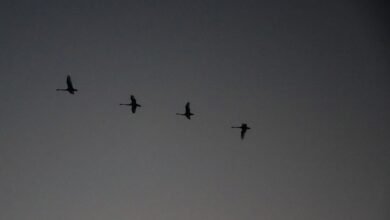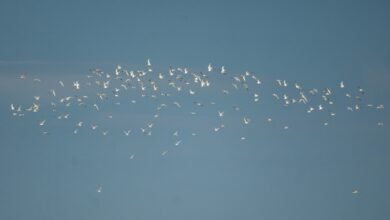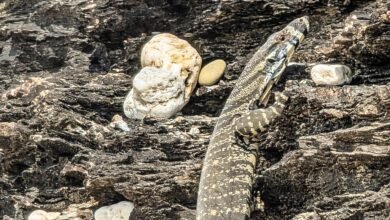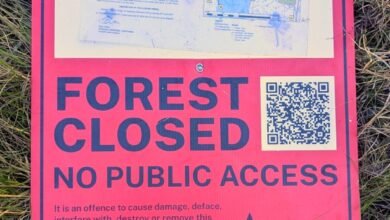13 June Virus 2020
More than 7.6 million cases of the novel coronavirus have been confirmed worldwide, as well as at least 425,000 deaths, according to Johns Hopkins University. CNN
The C.D.C. projects up to 140,000 deaths in the U.S. by the Fourth of July. NY Times
‘Before long we will be back to where we were when we put the stay-at-home order in place,’ said Mecklenburg County, N.C., health director Gibbie Harris. Washington Post
‘Absurd and shameful’: Winston Churchill statue sealed in steel in London. SMH
Having endured seven years on Nauru, Salah and his son Mustafa are the last refugee family remaining on the island, after their US resettlement applications were rejected. The Saturday Paper
Hundreds of people turned out in Reading town centre on Saturday for the Black Matters Live protests. Hundreds turned out in Forbury Gardens. Berkshire Live[1]
Black Lives Matter protests have morphed with staggering speed into a frenzied assault on history, liberty, and reason. The Australian
 I walk into the sand, make out a Striated Heron hidden in the darkling too late, it takes off. Beneath its wings the surface skitters with fish and two lapwings rise complaining loudly. A White-faced heron flies in, landing close.
I walk into the sand, make out a Striated Heron hidden in the darkling too late, it takes off. Beneath its wings the surface skitters with fish and two lapwings rise complaining loudly. A White-faced heron flies in, landing close.
 Eos swathed in blue bandages has two windows.
Eos swathed in blue bandages has two windows.
 I listen to its silence then the dull breakers, the ripples of the river net ome, then the Fan-tailed Cuckoo, Whipbirds, White-cheeked Honeyeaters, a Lewin’s Honeyeater and a Willy Wagtail (scurrying next to me). Miilba has regained her feminine curves . . . I can’t read my notes . . . an osprey with a relaxed beat flies in from the sea, must have circled, heads upriver.
I listen to its silence then the dull breakers, the ripples of the river net ome, then the Fan-tailed Cuckoo, Whipbirds, White-cheeked Honeyeaters, a Lewin’s Honeyeater and a Willy Wagtail (scurrying next to me). Miilba has regained her feminine curves . . . I can’t read my notes . . . an osprey with a relaxed beat flies in from the sea, must have circled, heads upriver.
 I round the corner quietly, the Striated Herron is hunched on the rocky elbow, his favourite ground. A Great Egret is jumping around on the far bank, brilliant white even in this yellow varnished beginning.
I round the corner quietly, the Striated Herron is hunched on the rocky elbow, his favourite ground. A Great Egret is jumping around on the far bank, brilliant white even in this yellow varnished beginning.
 No sign of the Osprey, the fallen casuarinas are hanging in, but the water has ripped their tips and crowned them with dead weeds.
No sign of the Osprey, the fallen casuarinas are hanging in, but the water has ripped their tips and crowned them with dead weeds. I walk back hear a squeak as the White-faced Heron takes off slowly lapping the air and growling. Every day different.I happen to look up and the Osprey is right above me. I take a few shots, the light is poor, nearly miss a Brahminy Kite sailing away.
I walk back hear a squeak as the White-faced Heron takes off slowly lapping the air and growling. Every day different.I happen to look up and the Osprey is right above me. I take a few shots, the light is poor, nearly miss a Brahminy Kite sailing away.
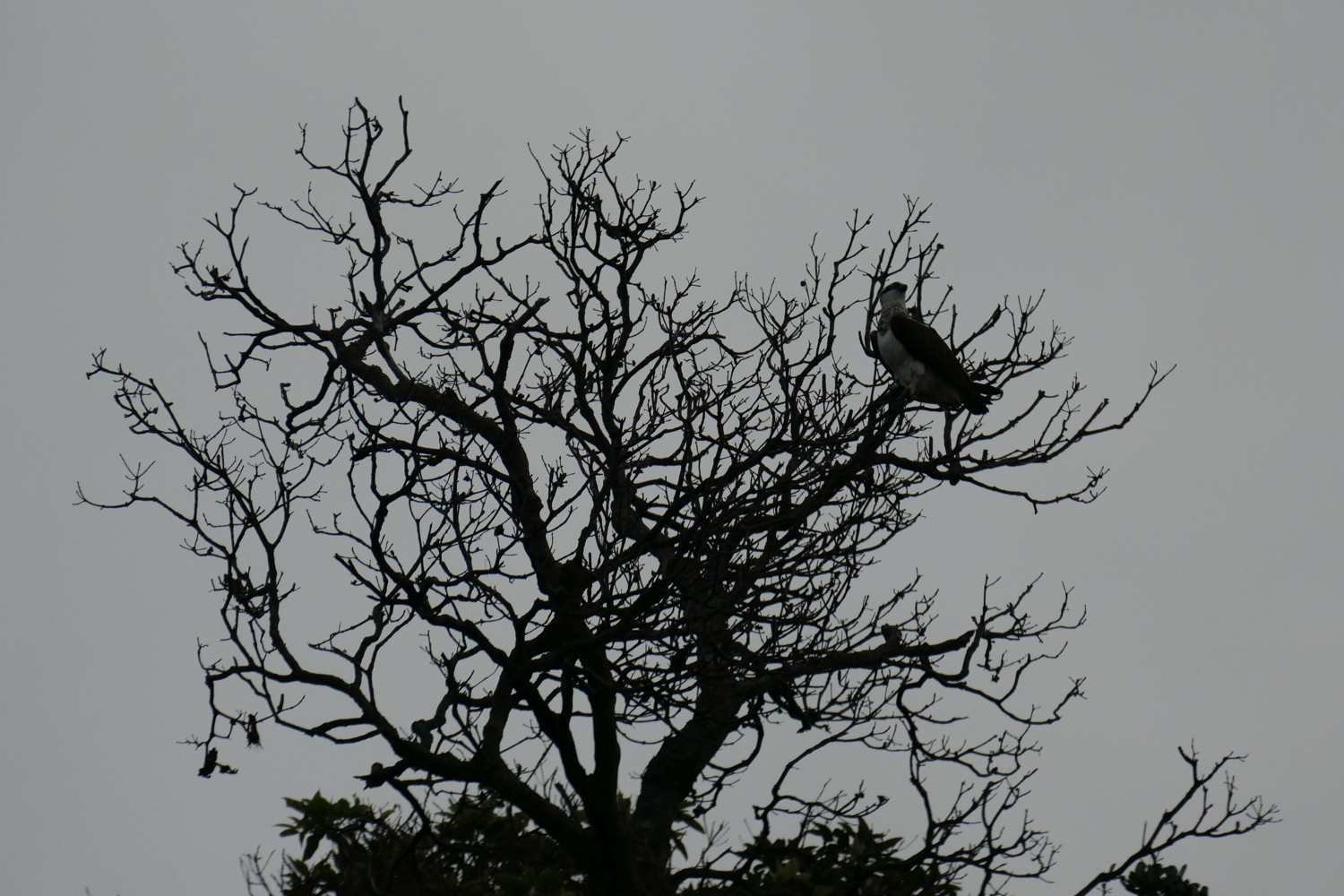 Two cormorants fly into the lagoon
Two cormorants fly into the lagoon After a minute they fly across to the river
After a minute they fly across to the river
 I catch sight of the Osprey heading north with a fish, I have missed the catch.
I catch sight of the Osprey heading north with a fish, I have missed the catch.
 Helios finally turns up.
Helios finally turns up.

~
I head back, pick up Wyn, we head south to Nambucca. As we arrive squad of fifty Scaly-breasted Lorikeets fly over the river. A Small-leafed Fig holds a gang of raucous Figbirds, the first we have seen for months. Lichen loves its bark.
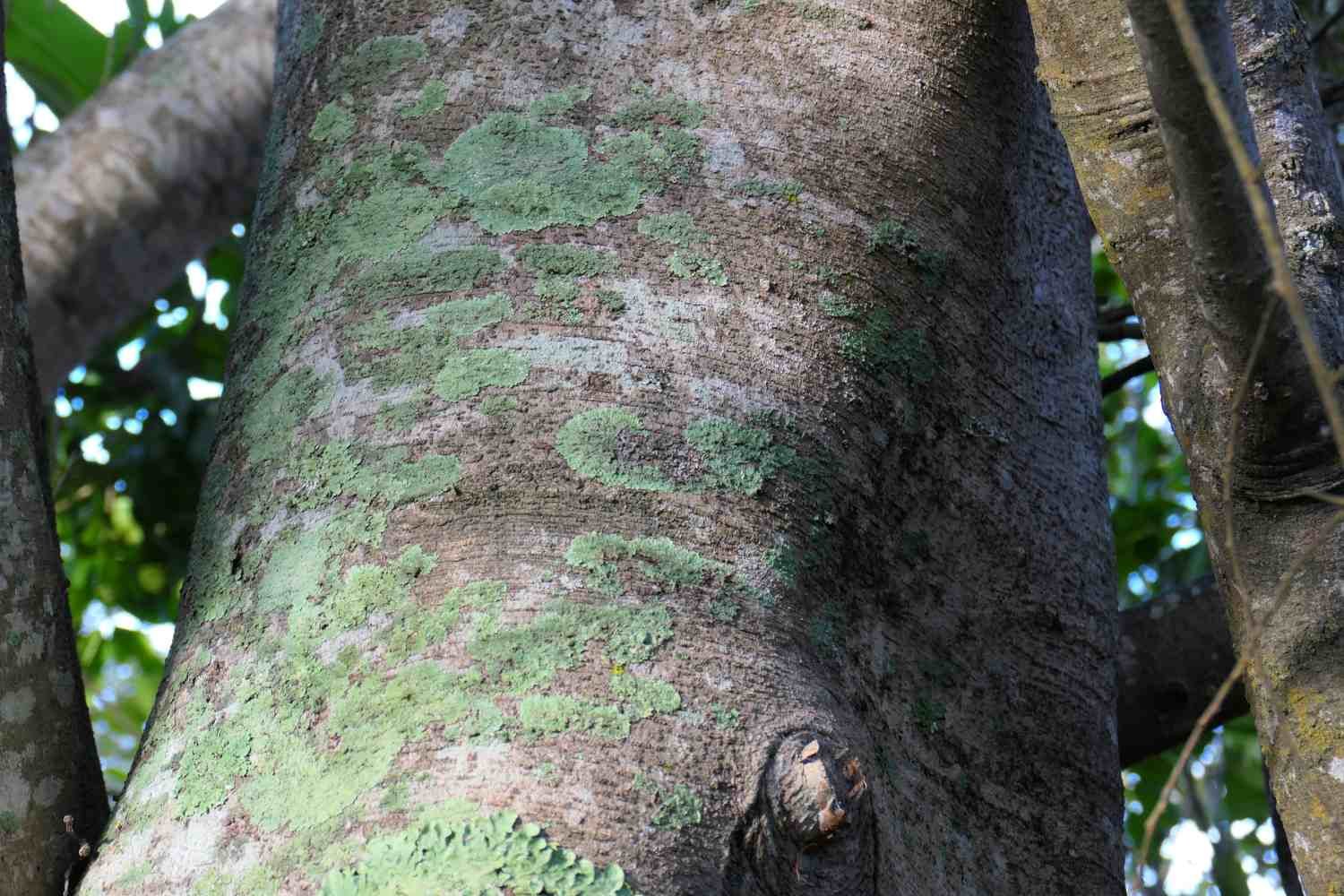 The water accepts my lens gracefully.
The water accepts my lens gracefully.



~

I am feeling nostalgic because I have just seen an image of a peaceful Black Lives demo in Reading. I recognised the bandstand where I saw Quintessence play one Saturday afternoon (c1971). I recall sitting (posing) in a lotus pose (painful), in a favourite mauve grandpa vest wearing beads and a peace badge. I realised at the time that this was a little ridiculous, but I gave it a go. I was 16. It recall a beautiful afternoon and a beautiful concert.[2]
The Aldermaston marches were anti-nuclear weapons demonstrations in the 1950s and 1960s. The first major march was at Easter 1958. When the 1963 Aldermaston march reached London an estimated 100,000 filled Trafalgar Square. In an essay written two years later Susan Sontag wrote that ‘a mass trauma exists over the use of nuclear weapons and the possibility of future nuclear wars . . . it became clear that . . . every person would spend his individual life under the threat not only of individual death … but of something almost insupportable psychologically—collective incineration and extinction which could come at any time.’[3]
The marches died out but were revived in 1972. Only about 500 marchers took part but I was there chanting as we walked to the Atomic Weapons Research Establishment, not far from my boarding school. I was reading Kerouac, Leary and Huxley, a young idealist. The times were changing, but only by minutes.
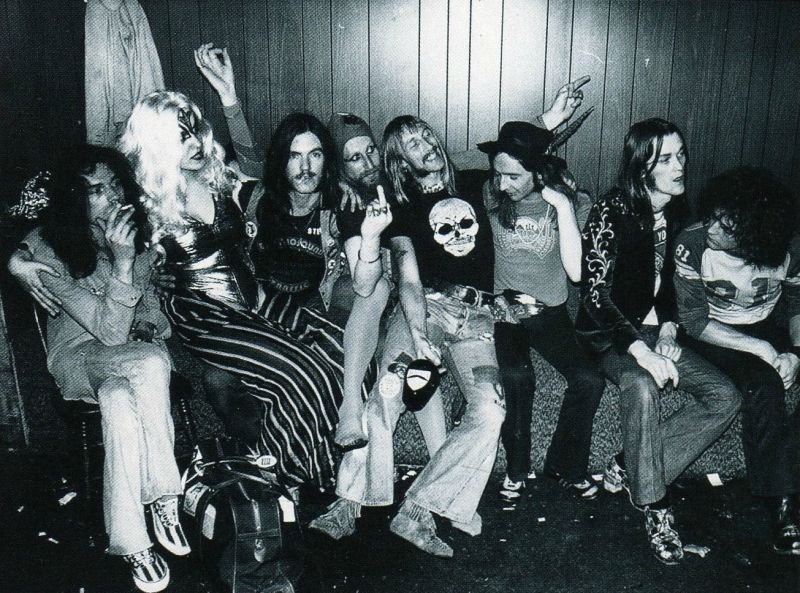
The following day there was a peace festival (April 3) in Falcon Field opposite the main gate of the nuclear centre. Hawkwind, Roy Harper and the poets Adrian Henri and Adrian Mitchel were there. I confess I only remember Hawkwind. I loved their album released the previous year ‘In Search of Space’, throbbing space rock, but what I recall is not the music but the state of the band. Roadies had to push the out-of-their-minds musicians up onto the stage and even help Lemmy with his bass guitar. Lemmy later said that Hawkwind, ‘were a black fucking nightmare. A post-apocalypse horror soundtrack. We wanted to make people’s heads and sphincters explode.’ [4] I never listened to later records, didn’t like their hit ‘Silver Machine’, but always admired the energy of that 1971 release. I’m typing this out and listening to ‘Master of the Universe’, for the first time in many decades. Its energy has dissipated, its production is poor, but I am still fond.
That August I hitchhiked from the south coast to the Reading Festival. A highlight for me was Curved Air and Genesis on the first night, the Faces on the Saturday with Rod Stewart kicking footballs into the crowd, and Focus. I don’t recall Robert Wyatt’s Matching Mole on the Sunday ( a favourite on record).
I had been to the first Reading Festival the previous year in 71. We hitchhiked from school and with no money broke in through the fence with others, slept out in the open. On the Sunday they announced a ticket check. We were not sure what to do, but monks from my school had organised a tent for mass, so we went to mass. Though they saw us, and skipping school for a weekend was extremely high on the list of misdemeanours, there were no repercussions. I think they were just pleased we were there at mass, not knowing our purpose. I recall nothing of the music, which I blame on drugs and cheap cider.
There are prehistoric instruments dating back at least 42,000 years (flutes of bird bone and mammoth ivory, come from a cave in southern Germany. The oldest surviving notated music was found on clay tablets and is the ‘Hurrian Hymn to Nikkal’ dating back to 1400 BCE. (She was a Goddess of orchards, Amorite, northern Syria).
Music was often thought to be a communication with the divine and used in rituals. It was with song and dance an important communal glue. Its origins are mysterious. Cognitive psychologist and linguist Steven Pinker thinks it is just a by-product of evolution, ‘auditory cheesecake’.[5] Whereas, Steven Mithen an archaeologist and cognitive scientist thanks music is an important cognitive faculty that helped humanity develop. Condillac and Rousseau both identified music as well as language, as separating humans from other species.
There is evidence that music and speech are closely connected.[6] Neurological research shows that rhythmic music affects our stress response and can be used to treat trauma. [7]
Doctors have found that prescribing music can improve heart health and lower cholesterol levels. Their research found that if a patient listens to 30 minutes a day of their favourite music, it does more than relaxing them mentally – it also benefits them physically by expanding and clearing blood vessels. [8]
Pythagoras examined ratios between the lengths of vibrating strings and found a mathematical relationship between notes that sounded pleasant, and developed a scale. The mathematics of music does nor explain its importance.
For more years than I care to think about I have been worrying away at the question, or, rather, pair of questions: What is the nature of music? and What is its function in human life? Chris Small[9] I confess I have never worried and never tried to analyse its depths, despite it being so important to me, despite not being able to read music or play an instrument.
The close relation that music has to the true nature of all things can explain the fact that, when music suitable to any scene, action, event, or environment is played, it seems to disclose to us its most secret meaning, and appears to be the most accurate and distinct commentary on it. Arthur Schopenhauer [10]
Music changes all the time, sometimes in revolutionary strides, as when Hermann Helmholtz examined musical sound and found overtones, that ‘single’ natural musical tones actually emit several tones, and that the strongest of these overtones played together produce a major chord. Or Wagner with the chromatic language of Tristan and Isolde of 1859.[11] Or Debussy at the start of his career visiting the Java exhibit at the Paris Exposition of 1889. In a model Kampong demonstrations of communal village life from agricultural and religion practices to entertainment including the gamelan took place. He loved the music and wrote that its layers, ‘obey laws of counterpoint which make Palestrina seem like child’s play.’[12] (He also heard music from Cambodia and Vietnam). He had been a follower of Wagner and the ‘music of the future’, but a few months after hearing gamelan he went to Bayreuth but came away unimpressed.

I spent a few weeks in Ubud, Bali, in 1981. It just a very small town, no fancy hotels then, but everyday I managed to find a performance in the surrounding villages and would lose myself in the music of a dance, puppet show, or temple ritual. Now there is the Ubud Gamelan Cultural Show.
There used to be-indeed, despite the troubles that civilization has brought, there still are-some wonderful peoples who learn music as easily as one learns to breathe. Debussy[13]
Can we be optimistic of the future, of health, wellness, civil order and governance, freedoms and as optimistic for the future of music as Robert Schumann?
Our attitude runs as follows: to recall the past and its music with all the energy at our disposal, drawing attention to the ways in which new artistic beauties can find sustenance at a source so pure . . . and finally to prepare for and help expedite the advent of a new poetic age. [14]
In 1967, Steve Reich was setting out as a composer in San Francisco and New York. The arts scenes were vibrant and supportive.
To make a long story short, painters and sculptors helped me get gigs. Sol LeWitt bought a score of four organs and some other scores. I used that money to buy the Glockenspiels for “Drumming.” Bruce Nauman helped me get a concert at the Whitney. Richard Sierra helped with that concert and one at the Guggenheim. Michael Snow, the filmmaker, was part of that whole group. This was an exciting and very stimulating situation. [15]
And around 1975 Steve Reich brought ‘Drumming’ to my university, and a whole new world of music opened up to me.
How far can nostalgia take us? To the Spanish flu, the Black Death? To a time when I was ignorant of systemic racism, though at primary school we called the Italian boys from the ice-cream parlour ‘eyeties’, and at prep we called two boys from Malta ‘maltesers’. Of course I was racist, brought up with remnants of Empire, at a white private school where rugby and cricket were the de facto moral codes. You have to unlearn school, even now. Studying a combined honours in philosophy and sociology at university covered many, many different subjects, but Empire and racism were not among them.

[1] https://www.getreading.co.uk/news/reading-berkshire-news/gallery/pictures-black-lives-matter-protest-18415977
[2] I had no idea of who they were. Ron ‘Raja Ram’ Rothfield, an Australian conservatoire and jazz trained flautist met American bassist Richard ‘Shambhu Babaji’ Vaughan in Greece. They moved to London in 1968. ‘I wanted them all to live in the same area of Ladbroke Grove, as there’s a great neighbourhood atmosphere round here and I wanted to keep that in the group. I wanted to be able to get together easily and just wander in and out of each other’s houses… I believe that we’re all trying to find God. I wanted to get away from the worldly scene, the everyday hassle.’ Raja Ram, in the NME. They mixed mixed jazz, psychedelic rock and Indian music. He left music and became an envelopes salesman, returning to music becoming a pioneer of psychedelic trance music. https://recordcollectormag.com/articles/the-spirit-is-willing
[3] Susan Sontag, ‘The imagination of disaster’, in G. Rickman (Ed.), The science fiction film reader , New York, NY: Limelight Editions, 2004.
[4] In 2002, quoted by I Abrahams, Hawkwind: Sonic Assassins, London: SAF Publishing, 2004, p54.
[5] Steven Pinker, How the Mind Works, W. W. Norton & Company, 1997.
[6] Theo van Leeuwen, Speech, Music, Sound, London: MacMillan Press, 1999.
[7] ‘Healing rhythms’, All in the Mind, ABC RN, 11 December 2016.
[8] John Harlow, ‘If music be the food of love … then it also lowers cholesterol’, The Sunday Times, December 21, 2008.
[9] Chris Small, ‘Musicking: A Ritual in Social Space’, A Lecture at the University of Melbourne June 6, 1995. http://www.musekids.org/musicking.html
[10] Arthur Schopenhauer, The World as Will and Representation, 1819.
[11] In his 1860 pamphlet ‘The Music of the Future’ (Zukunftmusik), Wagner called for a music of the future. It was not enough for music to be contemporary. It had to leap into the future excavating forms already present but in embryo.
[12] Martin Buzacott, ‘Classically Curious: Debussy and the Paris Expo of 1889’, ABC Classic FM, 4 June, 2019.
[13] Brent Hugh, ‘Claude Debussy and the Javanese Gamelan’, a lecture recital, the University of Missouri, Kansas City, 1998. https://brenthugh.com/debnotes/gamelan.html
[14] Robert Schumann, Neue Zeitschrift für Musik, 1835.
[15] Steve Reich in Conversation with Richard Kessler, July 1, 1998. …nmbx.newmusicusa.org,
